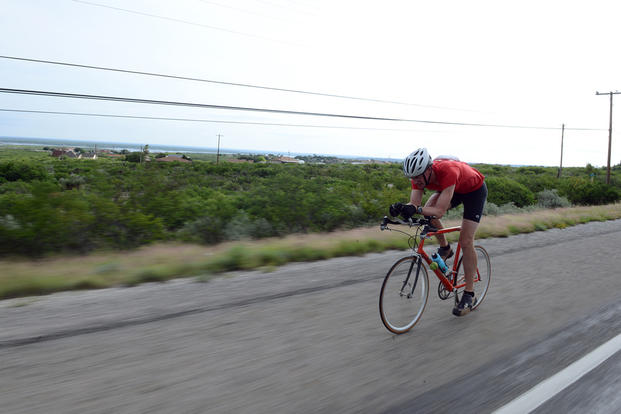When it comes to military PT, whether you are active duty or part of an ROTC group in college, you have to be smart about how you manage secondary workouts in the same day.
If you are seeking to prepare adequately for future goals in more challenging units such as special-ops programs, you need to consider a few rules. Whether you are Army, Navy, Air Force, Marines, Coast Guard or an officer candidate, command or group PT is usually mandatory a few days a week. Some commands may not require any group PT program; it depends on where you are stationed.
The problem many people have is when the group PT is every other day or a daily event with unknown events, so planning may be difficult. If possible, get to know what you are doing, such as a long run or group PT upper-body, lower-body or full-body event. This way, you can prepare your secondary workout accordingly.
However, you need to be smart about it and do not go blindly into a second workout of the day without considering the following rules:
1. Avoid back-to-back days of the same muscle groups/events: Try not to do the same muscle group the following day of workouts. For instance, you can arrange what you do in the morning upper-body group PT with a second workout Monday with an upper-body focus. Tuesday can be lower body or cardio only.
This way, you can rest muscle groups 48 hours for full recovery. You also can avoid two workouts in one day, followed by the same muscle groups the following day, then very likely a group PT again on Wednesday doing that same muscle group again (three days in a row).
2. Two-a-day rule: In the military, you cannot control what workouts you do with your command PT group. However, you can control the second workout of the day. Make sure you work the same muscle group in the afternoon as you did in morning with the PT group.
For instance, if you do push-ups and pull-ups/abs in the morning, do that again in the afternoon in the weight room; add more repetitions if you need more PT volume for the day; or just add more cardio if that is a weakness you need to work on to prepare better for future selection programs. Two-a-Day Ideas
3. When in doubt #1 -- non-impact cardio: It is never a bad idea to add in more non-impact cardio (or work on your swimming technique) if you did a big run or ruck in the morning with your PT group. If running four or five miles with your command at an eight-minute mile pace is not that challenging and you need to work on your faster goal pace but need a break from the impact, add in faster non-impact cardio events such as Tabata intervals with bike, elliptical or the rowing machine. Bike, elliptical or rowing pyramids or tough swimming/technique workouts are also a good non-impact cardio event.
4. When in doubt #2 -- more running: It is never a bad idea to add in more fast running if you did a big run or ruck in the morning with your PT group. If running four or five miles with your command at an eight-minute mile pace is not that challenging and you need to work on your faster goal pace, it is a good idea to add in faster running workouts later in the day.
Consider quarter-mile or half-mile runs at your goal pace for timed runs (maybe six- to seven-minute mile pace) in order to maintain or build your speed from slower-paced events done with the PT group. Mix in some sprints (speed/agility), too, especially now with a variety of new testing events being developed throughout the military branches.
5. When in doubt -- add a mobility day: When in doubt for a second workout of the day, do the non-impact mobility day, such as bike, elliptical, row or swim with stretching and foam rolling.
For instance:
Repeat 5 times
5 minutes of bike, elliptical, row (any speed variety)
5 minutes foam roller, stretch, massage tool
If a pool is available, add in a 10-minute swim, a 10-minute tread and a 10-minute dynamic stretch session in chest-deep water to loosen up the legs, hips and lower back. Adding a mobility day on the day between the group PT sessions is always a great option.
6. Do not forget weekends. You should have a rest day somewhere in the week or weekend. Or at least have an easy mobility day as mentioned above, but you also can make the weekend a tougher/longer workout to make up on such events as swimming, longer runs, harder PTs or rucking. Those tend to take more time. During the work or school year, it can be difficult to get this amount of time in the week when the schedule is busy. Take advantage of the weekend.
Stew Smith is a former Navy SEAL and fitness author certified as a Strength and Conditioning Specialist (CSCS) with the National Strength and Conditioning Association. Visit his Fitness eBook store if you’re looking to start a workout program to create a healthy lifestyle. Send your fitness questions to stew@stewsmith.com.
Want to Learn More About Military Life?
Whether you're thinking of joining the military, looking for fitness and basic training tips, or keeping up with military life and benefits, Military.com has you covered. Subscribe to Military.com to have military news, updates and resources delivered directly to your inbox.
















